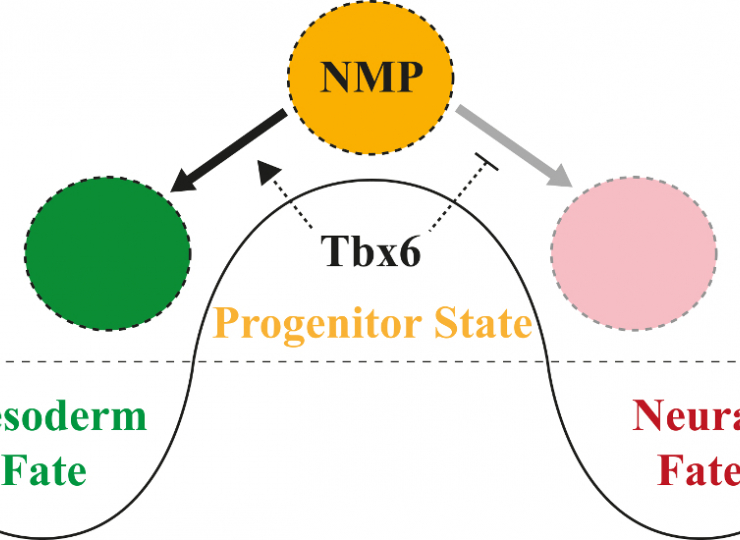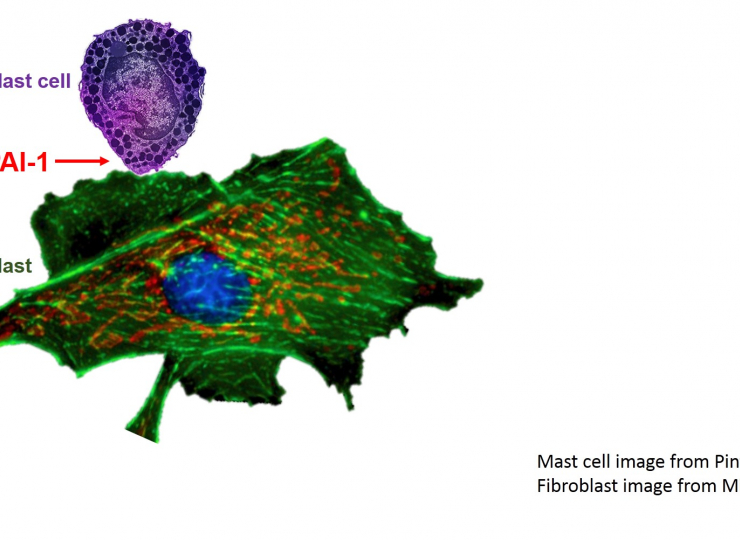Tight regulation of size, shape and number of organs is critical for normal development of the animal. In mouse embryos, mutation in a gene called Tbx6, a key mesoderm specifying factor, leads to formation of three developing spinal cord instead of one as seen in normal embryos. The additional spinal cords in these mutants are formed at the expense of a tissue called paraxial mesoderm – a tissue that makes muscles and skeleton below neck. Work done in InStem reveals a dramatic effect of Tbx6 mutation in the developing tail where not one, not three but five spinal cords develop. These mutant embryos have no paraxial mesoderm in tail and fail to grow along body axis and eventually, die around mid-gestation.
The dramatic characteristic of these mutants underscored the important role of Tbx6 and led us to investigate the close connection between neuronal and musculoskeletal development. During embryonic development of vertebrates, the axial growth is contributed by a small number of stem cells called neuromesodermal progenitors (NMPs). These cells differentiate into the spinal cord as well as the paraxial mesoderm. However, the mechanism underlying the fate decisions made by these cells is unclear.
Research in Ramkumar Sambasivan laboratory focuses on the gene regulatory mechanisms underlying mesoderm formation in vertebrates. Work by Alok Javali and Aritra Misra reported in this study revealed co-expression of Tbx6 and the neural marker Sox2 in a very specific region of the early mouse embryo documented to be NMP niche. Identification of this Tbx6-expressing NMP subset provides a key missing link in understanding the mechanism of fate decision in NMPs. For various reasons, including their small population size, these cells had eluded other researchers. Aritra says, “We made a surprising observation of Tbx6 and Sox2 co-expression in mesoderm-like cells derived from pluripotent stem cells in the dish. This led us to hunt for similar population in the developing embryos.”
The team found Tbx6 and Sox2 co-expressing cells in the region of the embryos where the NMPs are primed to differentiate into mesoderm. They extended their findings to three different key developmental stages and confirmed the results by independent methods. Alok concludes that the time and spatial expression pattern of Tbx6 in NMPs along with the characteristics of its mutants suggest that Tbx6 favours mesodermal fate in NMPs in the normal embryo. When Tbx6 is absent, all NMPs make spinal cord resulting in the formation of additional spinal cord. Thus, this work strongly supports the role of Tbx6 in regulating the fate choice of NMP stem cells.
In-depth studies on the mechanisms of embryonic development not only strengthens our fundamental knowledge in biology, it also opens up prospects in the field of medicine. Explaining the significance of their work Ramkumar remarked that understanding how stem cells are regulated during embryonic development provides the foundation to harness the potential of stem cells in regenerative medicine.
The work described here has been published as a paper titled " Co-expression of Tbx6 and Sox2 identifies a novel transient neuromesoderm progenitor cell state " in the journal Development in December 2017. The paper can be accessed at [http://dev.biologists.org/content/early/2017/10/28/dev.153262]












